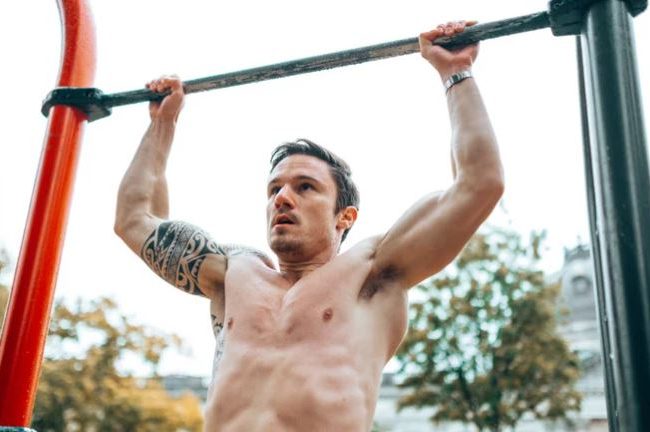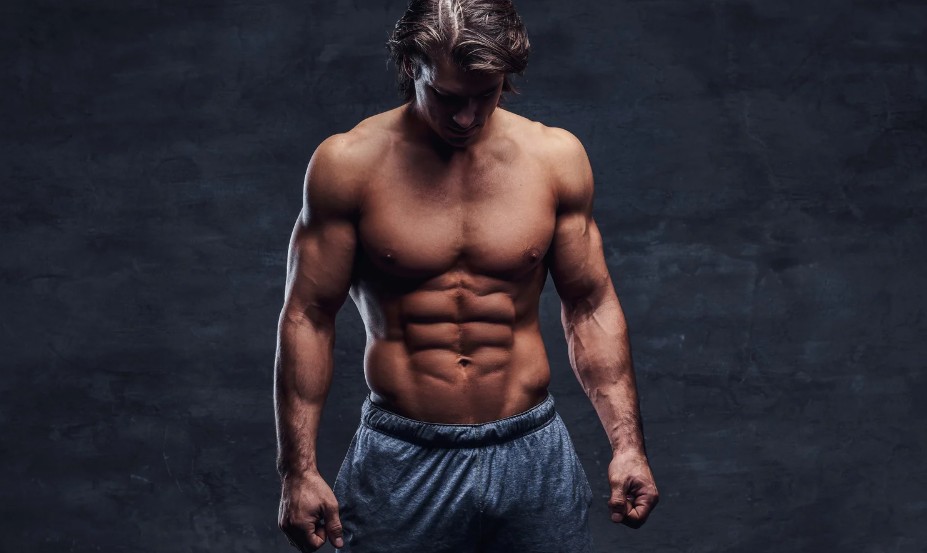
Calisthenics Physique – How to Build It? Strength, Aesthetics & Mastery Combined
Building a calisthenics physique is more than just looking good, it’s about mastering your own body, developing true functional strength, and crafting an aesthetic that reflects discipline and control. Over the years, I’ve dedicated myself to this training style and seen firsthand how powerful it can be.
Let me take you through everything I’ve learned, broken down in detail, so you can build your own impressive calisthenics physique.
What Does a Calisthenics Physique Really Look Like?

Defining the Calisthenics Body: Lean, Functional, & Strong
When people talk about a “calisthenics body”, they’re often referring to a lean, muscular, and athletic build. Unlike bodybuilding, where mass is prioritised, calisthenics promotes a balance of strength, agility, and aesthetics, a body built to move efficiently.
How Body Composition Changes with Calisthenics?
What surprised me most when I switched to bodyweight training was how my body fat percentage dropped while my muscle definition improved. This happened naturally due to high training frequency, intense core work, and overall body activation.
Calisthenics Physique vs. Bodybuilding Physique
| Aspect | Calisthenics Physique | Bodybuilding Physique |
| Muscle Mass | Moderate but functional | High volume, hypertrophy-focused |
| Body Fat | Low to moderate | Varies, often lower for competition |
| Strength Type | Relative (bodyweight-focused) | Absolute (heavy lifting) |
| Mobility & Flexibility | High | Often neglected |
| Equipment Needed | Minimal | Extensive (gym-based) |
Real-Life Examples of Calisthenics Transformations
I’ve seen countless transformations in the calisthenics community, from skinny beginners to chiselled athletes. These transformations come not just from pushing harder, but training smarter.
Key Traits: Muscle Definition, Control, and Athleticism
Calisthenics highlights these characteristics:
- Defined chest and shoulders
- Strong V-taper from back and lats
- Ripped core (especially from L-sits, levers, and planks)
- Balanced legs, not overly bulky, but powerful
Is Calisthenics Enough to Build Muscle and Definition?

Yes, You Can Build Muscle Without Weights.
Many people assume weights are necessary for muscle growth, but I’ve personally gained size using only bodyweight. It’s all about increasing intensity, mastering progressions, and training with intent.
How Calisthenics Triggers Hypertrophy?
Muscle growth comes from mechanical tension, metabolic stress, and muscle damage. In calisthenics, that means:
- Slow tempo reps
- Explosive movements
- High time-under-tension holds
Strength-to-Weight Ratio and Muscle Efficiency
What I love about calisthenics is that strength is built in harmony with your body weight. Your strength-to-weight ratio becomes a true indicator of athleticism.
Can You Bulk Up with Calisthenics Alone?
Yes, but within reason. If you’re aiming to be massive, calisthenics won’t get you there. But for a ripped, athletic look, it’s ideal.
Progressive Overload Methods in Bodyweight Training
Here’s how I applied progressive overload:
- Increasing reps or sets
- Slower tempo and negatives
- Advancing to harder progressions (e.g., from push-up to archer push-up to one-arm push-up)
- Reducing rest time
Calisthenics vs Weight Training: A Muscle Development Comparison
| Category | Calisthenics | Weight Training |
| Equipment | Minimal | Gym-based |
| Muscle Isolation | Harder, requires control | Easier with machines |
| Joint Health | Gentler on joints | Can be taxing with poor form |
| Functional Strength | High | Moderate |
| Body Control | Exceptional | Not a focus |
How I Structured My Calisthenics Workout Plan?
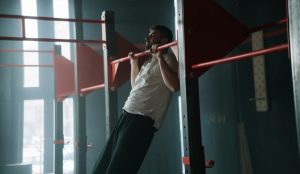
My Training Philosophy: Function Over Fluff
Rather than chasing biceps curls or isolation, I trained with purpose. I focused on movements that translated into real-world strength and aesthetic results.
Weekly Full-Body Routine Structure
Here’s the structure that worked for me:
- Day 1: Push (Chest, Shoulders, Triceps)
- Day 2: Pull (Back, Biceps)
- Day 3: Core + Skill Focus
- Day 4: Active Mobility or Rest
- Day 5: Lower Body + Balance
- Day 6: Full Body & Skills
- Day 7: Rest / Light Mobility
Combining Static Holds & Dynamic Reps
I blend static exercises (like planks, L-sits, front levers) with dynamic ones (push-ups, pull-ups, squats) to hit all muscle fibres.
Incorporating Skill Work into Routine
I never skip skill drills. Things like:
- Handstand holds
- Muscle-up practice
- Planche leans
- Tuck front levers
These aren’t just flashy—they build control and strength.
How I Train Legs Without Weights?
- Pistol squats
- Jump squats
- Wall sits
- Nordic curls
- Bulgarian split squats
Legs respond just as well with volume and control.
Adjustments for Home Workouts & Travel
When I’m away from my usual training space, I use:
- Door frame pull-up bar
- Resistance bands
- Gymnastic rings (super portable!)
- Bodyweight-only variations
| Day | Focus Area | Key Exercises |
| Monday | Push | Dips, Pike Push-Ups, Archer Push-Ups |
| Tuesday | Pull | Pull-Ups, Inverted Rows, Chin-Ups |
| Wednesday | Core + Skills | L-Sits, Hollow Holds, Handstand Practice |
| Thursday | Rest or Mobility | Foam Rolling, Hip Openers, Shoulder Dislocates |
| Friday | Legs & Balance | Pistol Squats, Lunges, Nordic Curls |
| Saturday | Full Body | Burpees, Muscle-Up Progression, Supersets |
| Sunday | Rest or Light Cardio | Walking, Yoga, or Recovery Flow |
Which Skills Help Build a Calisthenics Physique Faster?
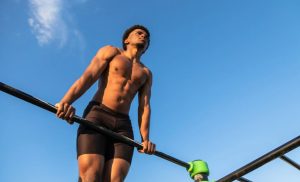
Skills That Develop Strength & Aesthetics Simultaneously
These are the cornerstone skills that helped me carve out my physique:
- Planche: insane shoulder, core, and chest development
- Front Lever: back and core strength
- Muscle-Up: power and explosiveness
- L-Sit – ab definition and hip flexor strength
- Handstand: balance, shoulder sculpting, confidence
Why Skill Training Enhances Your Physique?
Skills require more muscle control than standard reps. They challenge stabilisers, improve posture, and build symmetry.
Balancing Skill Practice with Reps and Sets
I dedicate 15–20 minutes per session to skill progressions, usually before my main sets, when I’m freshest.
Common Progressions I Followed
- Band-assisted movements
- Negative reps
- Isometric holds
- Partial range reps
- Wall support (handstands/front levers)
How Important is Nutrition for a Calisthenics Physique?
Eating for Lean Muscle, Not Just Calories
I don’t obsess over calories, but I stay mindful. My goal is fuel, not fluff, enough to train hard and recover well.
What I Eat in a Day?
| Meal | Example |
| Breakfast | Porridge with banana, whey protein, peanut butter |
| Lunch | Chicken breast, quinoa, broccoli |
| Snack | Greek yoghurt, berries, almonds |
| Dinner | Salmon, sweet potato, spinach |
| Post-Workout | Protein shake with creatine |
Supplements I Use (and Avoid)
- I use: Whey protein, creatine, omega-3, vitamin D
- I avoid: Fat burners, unnecessary pre-workouts
How I Stay Lean Without Cutting or Bulking?
I cycle my carbs based on training intensity and prioritise whole foods, water, and gut health.
Recovery Tips
- Sleep 7–9 hours
- Active recovery (walking, yoga)
- Hydration throughout the day
- Magnesium for muscle relaxation
How Long Does It Take to Build a Calisthenics Physique?
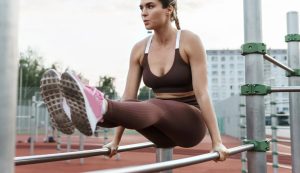
My Timeline: From Beginner to Visible Results?
In 3–6 months, I saw major changes in my physique. Within a year, I had noticeable definition, control, and strength.
Factors That Affect Progress Speed?
- Training frequency
- Nutrition consistency
- Sleep and recovery
- Starting point and genetics
How to Track Your Progress Without a Mirror?
- Log reps and form quality
- Record skill progression
- Measure strength-to-weight improvements
Common Mistakes That Can Stall Your Progress
Focusing Too Much on Reps, Not Form
Quality over quantity. Poor form = poor results.
Ignoring Skill Training and Mobility
These are game-changers for physique and performance.
Overtraining Without a Plan
I’ve been there. Rest is where growth happens.
Neglecting Recovery, Nutrition, or Sleep
All three are just as important as training.
Tools and Equipment I Actually Use in My Calisthenics Journey

My Go-To Gear
- Pull-up bar
- Rings
- Parallettes
- Resistance bands
- Lacrosse ball (for self-myofascial release)
Minimalist Setup: Training Anywhere
Here’s what I travel with:
- Rings
- Band
- Light mat
- Training journal
Final Thoughts: Why I Chose to Train for a Calisthenics Physique?
Training calisthenics gave me:
- Confidence in my body
- Freedom from gym machines
- A mindset shift toward mastery
I didn’t just build a body, I built a skillset and a sustainable way of training for life. If you’re chasing a physique that moves as well as it looks, calisthenics is the way. It may take time and consistency, but it delivers unmatched results. Your body becomes your gym, and every rep takes you closer to mastery.
Start with what you have. Train with purpose. Build the ultimate calisthenics physique, one rep at a time.



